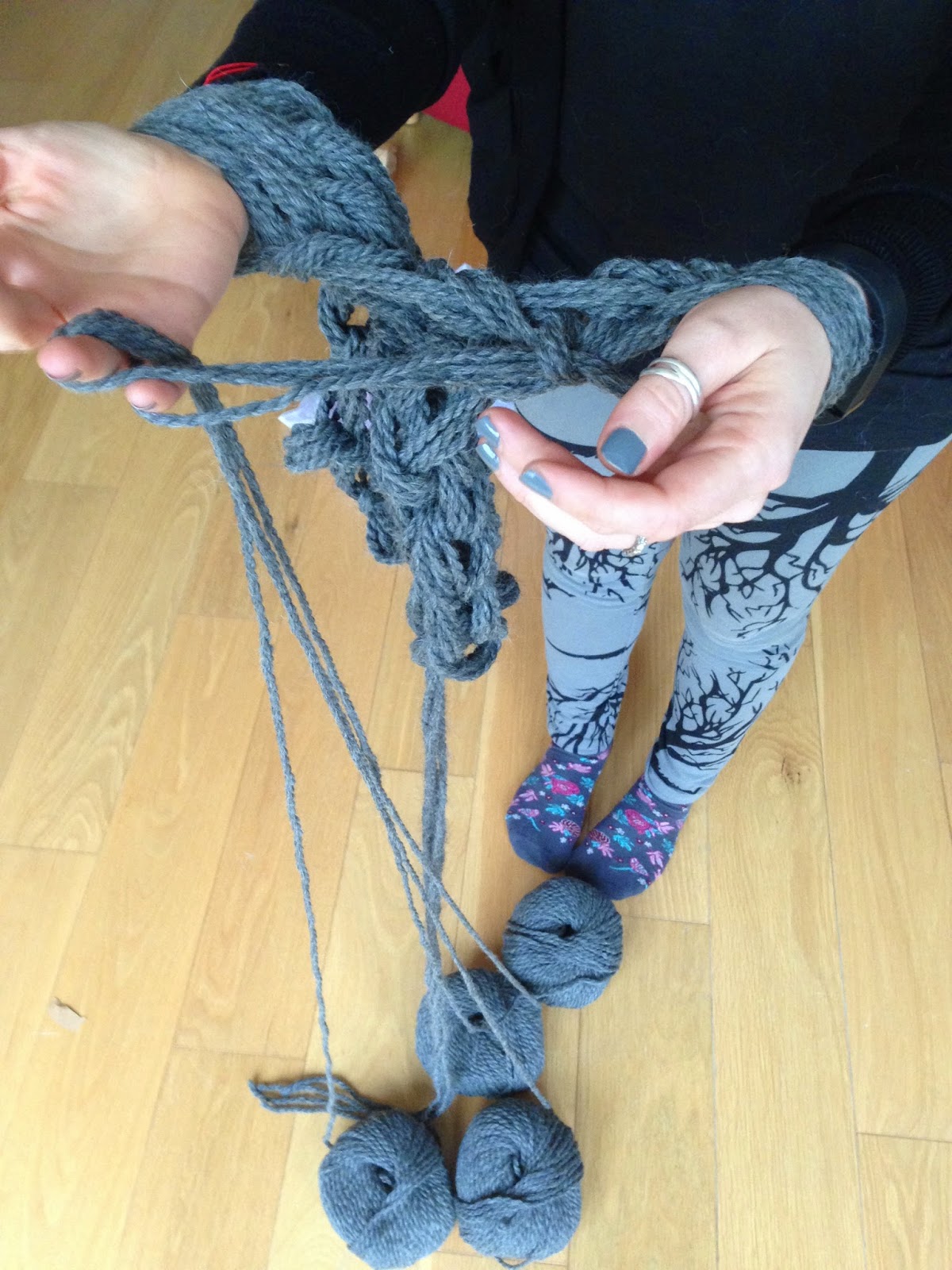We've all been there. Bought that really expensive top or shoes (or yarn) and just left it in our closet, not wearing it out of fear that we will ruin it, that no occasion is worthy of it.
This is what happened when I finally succumbed to the softness and shine of the Fyberspates Scrumptious yarn at the Ally Pally Knitting and Stitching show last year. Should this be a cowl, I wondered, or perhaps fingerless gloves? But is it wasted if I make gloves, which tend to felt and pile as you wear them? And so it sat in my drawer, unused and unloved for a full year.
But my year of making my own clothes has taught me to show them my love by wearing them rather than admiring them in my closet, and I decided that the time had finally come to make something out of this lovely yarn. And here it is.
The yarn is obscenely expensive (I think I paid £15 for one skein of 100g), but it is AMAZING! Definitely the most beautiful yarn I have ever worked with. Ok so it isn't very highly twisted, which made it hard to do all those k2tog and ssk that lace needs, but it is truly a joy to wear. The silk means that it is super super soft and not scratchy at all (something that I struggle with with 100% wool yarns unless they are merino), and also it has a beautiful shine that makes it look that extra bit special. And surely the silk will help stop my stupid hair from going frizzy?!
It helps, of course, that this was a really nice pattern to knit. The pattern is called Schwimmen, and I found it while looking on Ravelry for inspiration based on what other knitters had used this yarn for (which also convinced me that it was ok to use such a luxury yarn for a hat). It has that really good combination of being interesting to knit because of the lace, but at the same time not so complicated that you have to take copious notes and can't do anything else at the same time for fear of distraction.
 |
| Close-up of the lace pattern |
I did change it a little bit though. It calls for casting on 110 stitches, but that seemed like far too many so I decided to cast on 100 and then increase after the ribbing panel was done. I couldn't be bothered to calculate how to change the rib based on my number of stitches, so I just did a k1p1 rib instead. And I don't have 3.75mm needles (for the ribbing), so I used one 3.5mm and one 4mm - unorthodox, I know, but I figured it would probably average out somehow!
The end result is also meant to be quite slouchy, but I was worried it might end up a bit too slouchy, if such a thing exists, so I started the decreases after round 25 of the second round of lace pattern.
All in all, a huge success for my first fall accessory. Maybe one day I will I deserve something incredible extravagant and buy myself enough of this to make a cardigan or jumper. Maybe.


















































